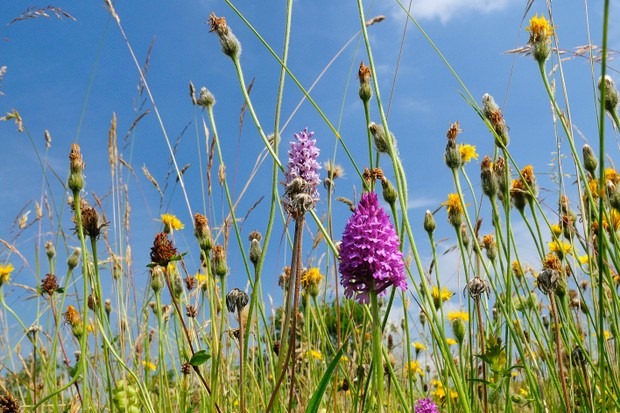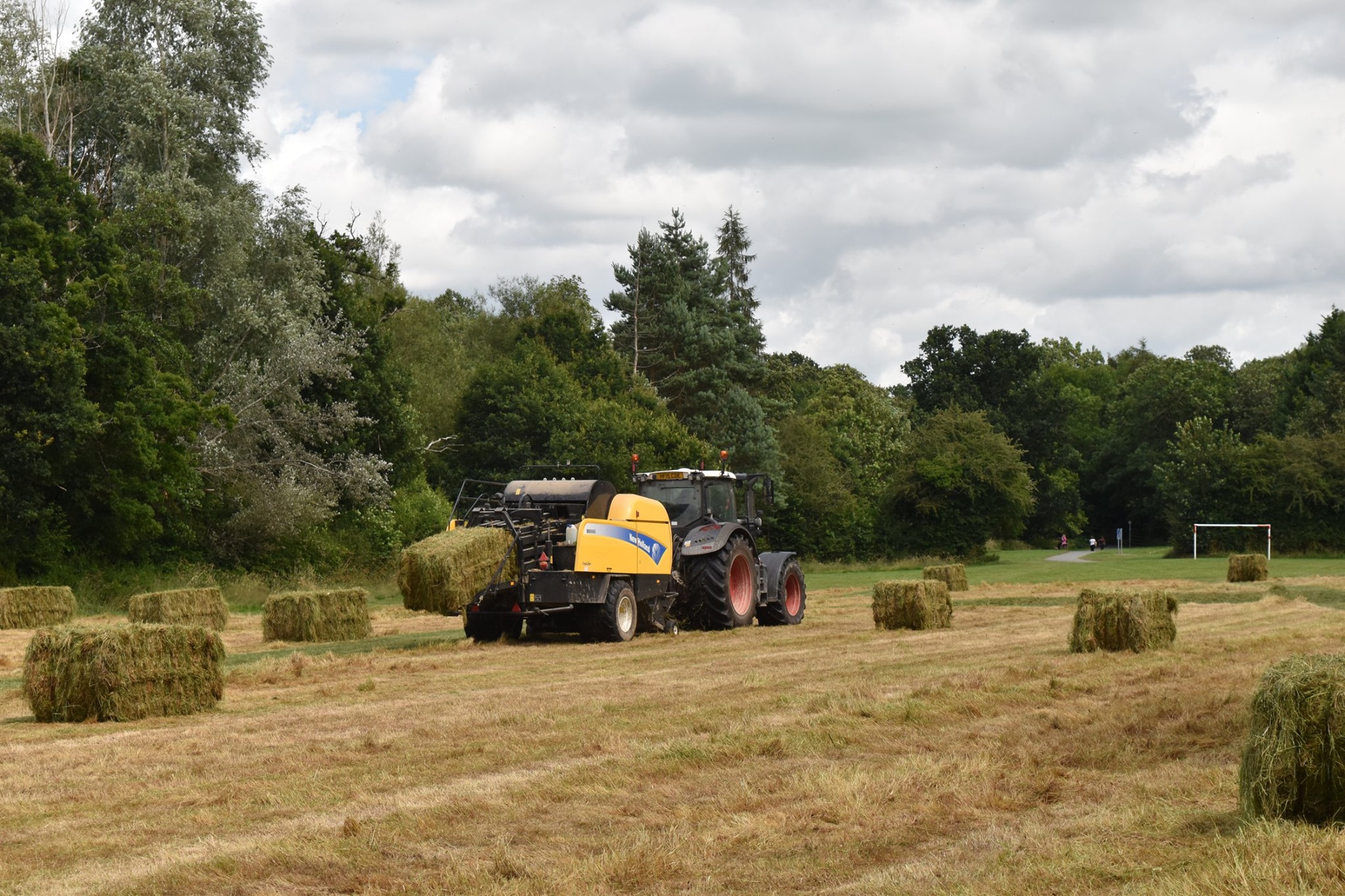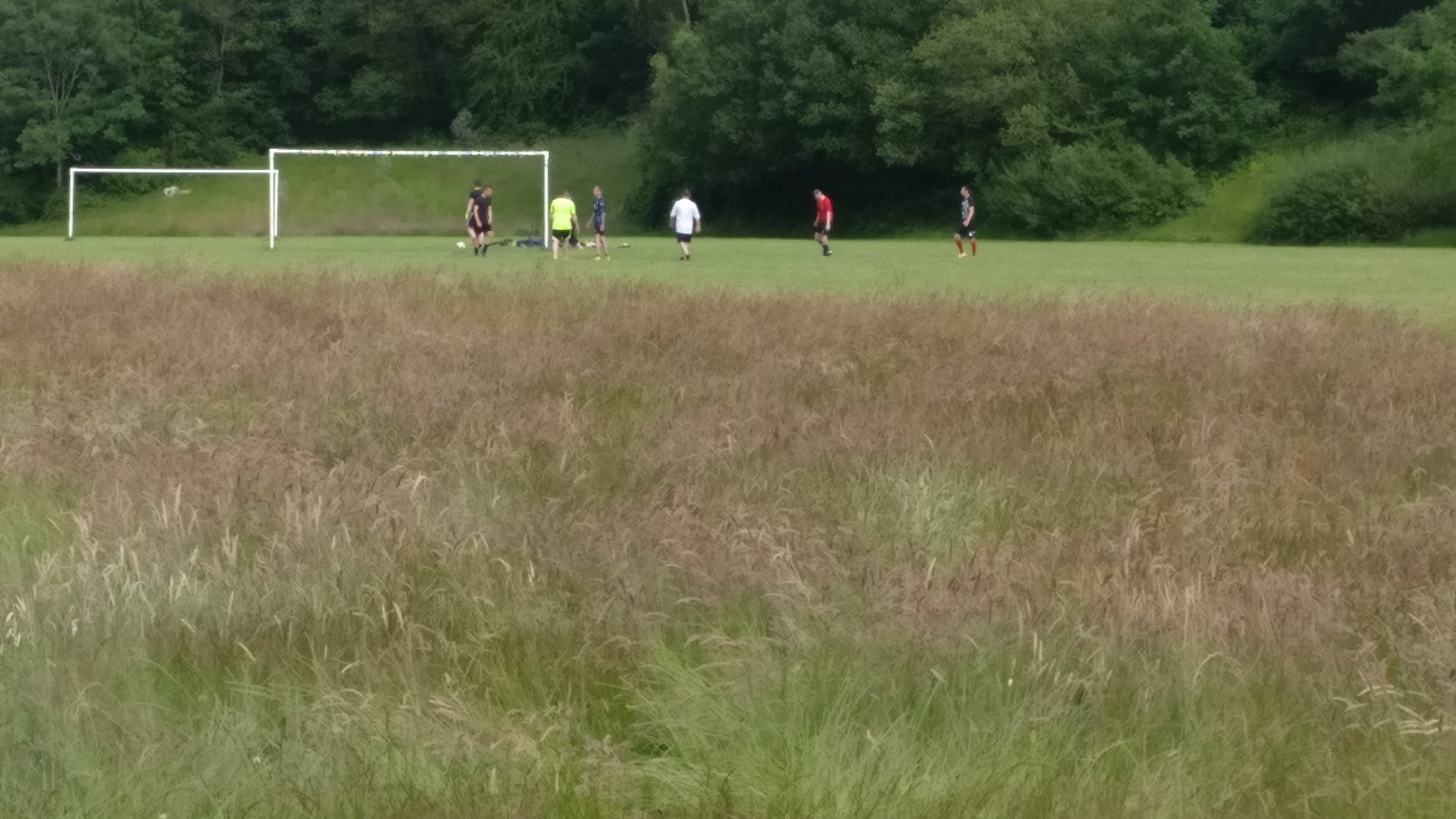Background
Previously the green spaces were managed by Powys County Council. Open Newtown took over the land management in January 2019.
The request from recent public consultations was for the green open spaces to serve a wider range of functions including:
– Increased biodiversity;
– Sports and activity areas;
– Quiet recreation and access to the river;
– Formal parkland / Town Park fit for events.
With 140 acres of open space we can accommodate all these needs. Open Newtown’s land management plan has been created to ensure sustainable land management that manages costs, increases biodiversity based on historical land management techniques (see below) and delivers the range of aspirations that the public hold for the town’s green spaces.
Previous land management was to mow the whole area on a regular basis giving a uniform cut throughout. This is a well proven technique but limits biodiversity and carries high maintenance costs. Powys County Council had understandably begun to reduce cuts in previous years leading to longer and coarser vegetation. Our new management plan reflects the public consultation and objectives of Open Newtown.



Our grasslands fall into the following three categories:
- Formal recreations standard – areas such as sports pitches.
- Amenity standard – grassland mown to achieve a smart and presentable ‘formal park’.
- Biodiversity Grasslands – maintenance of walking access routes and river viewing points to adopt a less intensive cutting regime that encourages wildlife. Most will be treated as hay meadow where grass will be cut and removed in July / August followed by an after-cut in Sept / Oct to leave tidy.
About the biodiversity grasslands
The land in Newtown is principally river floodplain and would, for generations past, have been used as hay production or pasture i.e. flatter fields with good grass production. Emulating this where possible – even though we can’t use stock – is a desirable and sensible approach to the open land in Newtown.
The rich biodiversity found in hay fields comes as a result of a number of factors:
Cutting and removing. Each year the hay crop would remove nutrients from the land. It was this limited nutrient supply in the land that allowed a wide range of grasses and herbs to flourish. So traditional management = rich biodiversity. Recent decades of continual ‘municipal’ cut and leaving cuttings behind has meant that nutrients have built up and this favours coarser grasses, so they dominate and suppress biodiversity. Experience tells us that it takes about ten years to de-nutrify grassland allowing diversity to re-establish itself. If it doesn’t come naturally it can be encouraged through re-seeding or plug planting but this will only be considered if natural regeneration does not occur.
Timing. A farmer is interested in capturing the optimal amount of nutrients and sugars in their hay as this would have been the fodder essential to see their stock through the coming winter. Grasses build nutrients and sugars through spring and early summer but once setting seed they lose condition as seeds fall and sugars return to the roots. Hay crops are traditionally taken in late July and this can be witnessed in fields all around Montgomeryshire. It does vary with each season so can often be in early August but can equally be in early July (as it would have been in the hot summer of 2018).
Late summer. A farmer has the benefit of owning stock and so can use his cattle or sheep, in late summer and early autumn, to after- graze the cut hay meadows. This removes further nutrients but also adds natural fertiliser to the land. We do not have this luxury and so we replace the after- grazing effect with a late summer cut which has the benefit of tidying up the land.
What we have done so far
In 2019 we cut on the 17th-19th July. This might be considered a week or two early as we have had a wetter / lusher early summer but Open Newtown is constrained by factors other than simple biodiversity including:
• Peoples usage. Awareness that school holidays are happening and requests that more open ‘kick about and picnicking space’ is cleared;
• Weather. In 2019 a weather forecast that said it would pour on Friday 19th making later removal both far more difficult (tractors on wet land) and more costly (we currently pay to dispose of grass, and wet grass weighs a lot more).
• Safety. Awareness that as grass ‘goes over’ it becomes more of a fire risk. And this risk is heightened as school holidays commence
Under Open Newtown’s land management plan we have substantially increased the area under biodiversity (hay meadow) management; so there is a major net gain for the town’s wildlife. This is balanced against keeping the Town Park closely cut, the paths open and the football pitches cut. This is a balancing act that, of course, will evolve over the coming years.
In 2019, because of factors outlined above, Open Newtown cut all of the hay meadows at the same time. We are considering whether in future years we divide the biodiversity grasslands in to two subcategories of:
• Early cut – applied to land where most public access and activity is known to exist.
• Late cut – which could be left a few weeks longer in less intensively used areas.
We welcome comments and ideas around this. However we would remind any readers that all of the land under Open Newtown’s control is shared space and compromise will always be necessary.
Benefits
- Sited appropriately and designed correctly wildflower and wildlife meadows have been found to add definition and to the attractiveness of a space.
- These managed habitat areas also have clear biodiversity benefits: as well as encouraging a wider range of grass and flower species, these areas encourage a massive variety of insects, invertebrates, bee’s and birds and other wildlife.
- Meadows can also provide for greater community benefit, as more natural style play can take place, (making daisy chains, ‘forest’ style play and creating environmental art etc). This is in line with recent research which shows that children’s development is encouraged more by ‘natural play’ than traditional equipped style play areas.
- In some areas we can also design mazes and other interesting features in the longer grass, see images attached. These can offer an innovative new playnew play resource for families, schools and other groups, and can be redesigned at no cost each year
- Educational activities can also be enabled in a meadow including bug hunts, flower species identification, sketching flowers etc.
Q&A
• The area has always been cut? This was historic, and not necessarily the correct approach just because it has always been done. Better options and / or need to manage costs Reduced budgets (over 50% reduction in parks) require a new approach, and NB the benefits outlined earlier in this document
• Just cut all areas a bit less – That would result in a lowered standard everywhere – what we are proposing is meadow/ habitat creation in some areas, while others will remain as neat and closely mowing areas so people have the opportunity to access both types of open space
• Dog faeces and glass is hidden and hazardous to people, children and dogs as they cant see it when running through the long grass – By cutting pathways we are encouraging people to walk on the natural walkways, whilst promoting people taking responsibility for themselves, their children and pets
• Cant find my dog faeces to pick up – Dogs should be under control and owners should have a good idea where their pets are, please keep them to the mown pathways and open areas – this is part of responsible dog ownership. Fundamentally, it is actually possible to still pick up after your dog – such as already happens on sand dunes on the coast
• Looks unsightly and unmanaged – Areas will look different during summer, when growth rate is naturally higher. Most areas will be cut once per year in about Sept/ October. This is more natural than mown grass, and wildflowers are able to blossom and they are great to enjoy
• Makes hayfever worse – It has been proven that close mowing grass in summer can have just as bad an impact on allergies as it kicks up dust etc.
• Risk of fires in hot weather – In our climate it is fairly rare for grass to become so dry that it is a real fire risk, however, these meadow areas will be designed to be away from vulnerable features, such as housing, and other buildings, and ultimately if there is a very dry spell and fires are experienced, it will be possible to instruct the contractor to undertake a cut as and when necessary
• Will encourage fly tipping – Fly tipping is illegal. It should not occur whether grass is long or short. The council takes this seriously and colleagues in the environmental team can investigate and prosecute individuals as and when this occurs. If the fly tipping is on Town Hall grounds, Dolerw Park, Trehafren Fields, Trehafren Hill, Vaynor Fields, or public land between Maesydail and Mochdre Industrial Estate, then please use our feedback form to report the incident. Please use the app ‘what3words’ to help us identify the location of the incident. This allows you to select a 3 metre x 3 metre area on a map and creates three unique words you can send to us.
• My feet get wet – People must take responsibility for themselves and need to wear appropriate footwear in the green spaces.
Stay up to date – join our newsletter!
Keep in touch – get involved – make a difference

